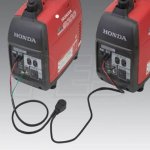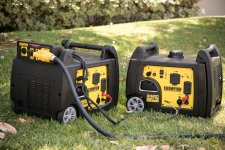Understand. I need to to call my 'well guy' to remind me what exactly is my pump. I know it's on a 230v 30amp breaker but I forget the actual pump numbers.
If considering running a 120 to 240VAC transformer, I'd knock at least 10% off the current output to cover transformer losses. (No more than 13.5A in the example discussed). Transformer loss = fuel burned.
A link cable extends your control circuit over a large area. Before I hooked anything valuable up to dual linked gens, I'd want to know the answer to the question I posed in #5 here..... aka, What happens live if they become unlinked ?
Personally, for home use, I'd just buy one larger 240 capable generator instead of linked duals + transformer. Apples2Apples (ie. staying all Honda), there is a good chance it would be cheaper unless you can get xformers free.
Apologies OP, as I believe 240 is a Don't Care in your case...... just don't want another person to learn about transformer losses the hard way......
Rgds, D.

